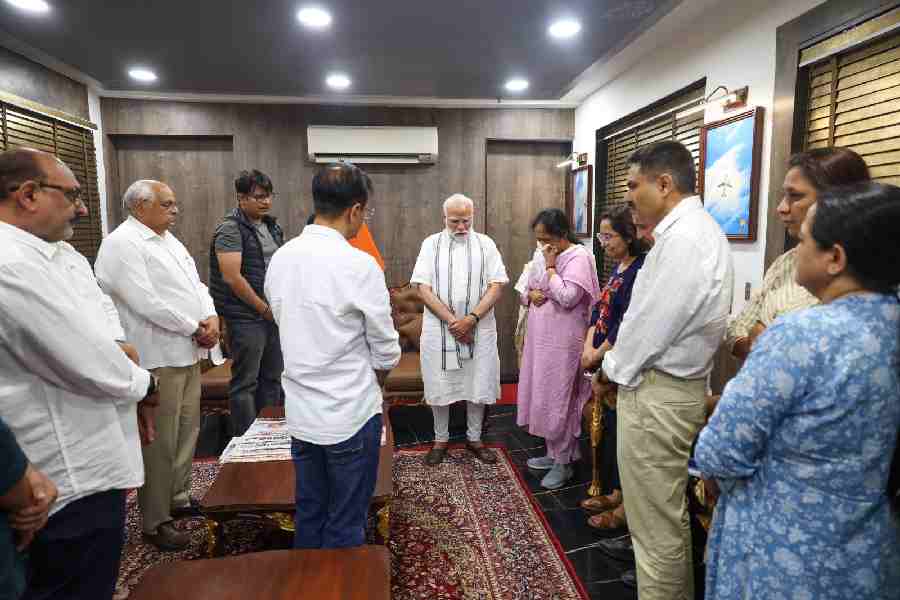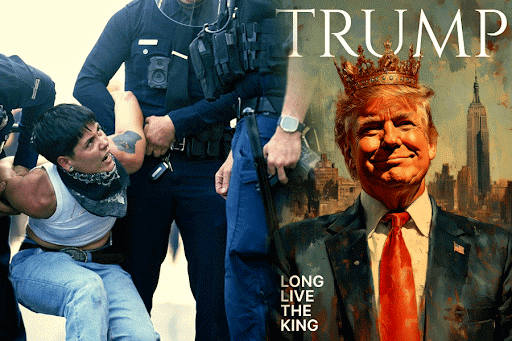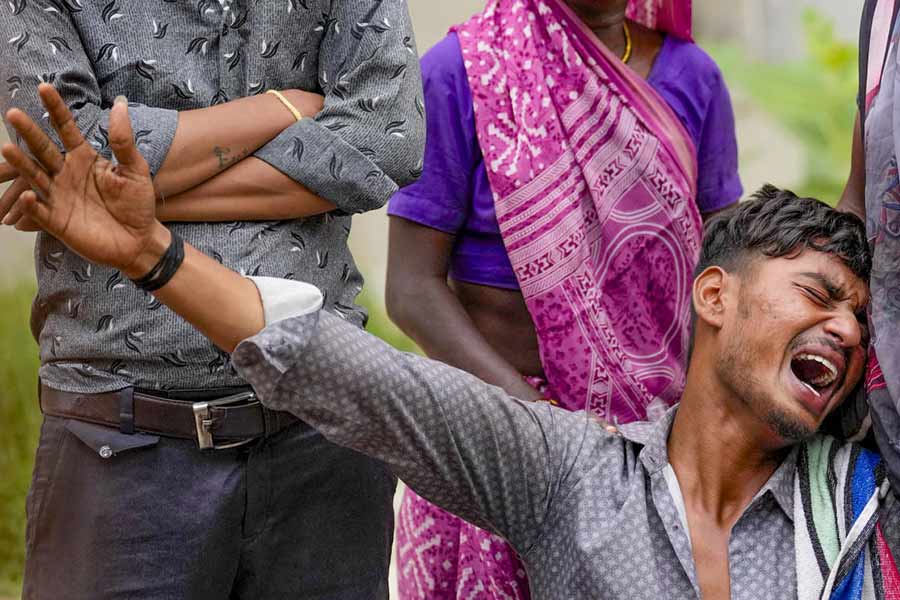 |
| FINGER ON HER LIP: A rare moment of silence from author-turned-activist Arundhati Roy on Wednesday when she railed against the state and rallied for the Maoists. Picture by Anindya Shankar Ray |
Can we leave the bauxite in the mountain?
Arundhati Roy, who recently visited Dantewada, understands that the tribals in the Maoist belt are angry. She gets very angry, too, talking about them. She piles up question on rhetorical question, one of which involves the bauxite.
But she has always beaten up language like cream till it has peaked. Or like metal, till it is sharp and can hit the enemy.
Which for her is the state colluding with the interests of private business.
“I just want to underline that most people in this country are living in an undeclared emergency,” she declares at a news conference on Wednesday afternoon before addressing a public meeting on Operation Green Hunt, the UAPA (Unlawful Activities Prevention Act) and joint force operations in Maoist areas.
She looks every bit the star speaker: she is wearing a fine cotton black and white sari paired with a finely stitched tomato red cotton blouse, a dainty red pendant and elegant earrings. Sudden light breaks off from the tiny nose stud. The Booker Prize-winning author is as attractive as ever, despite the salt in her hair, tied back, and spectacles covering her beautiful eyes.
She could be called the brand ambassador of Resistance, only if she had liked the word “brand”.
Her features had tensed a little at the news conference when she asked about the Maoists’ contribution to the violence.
Roy sees a hidden design in the state’s Maoist project. The general impression is that the government is seeking peace by going to war. “I say this government wants war.” Because what is at stake is the primal issue: land.
Hundreds of MoUs have been signed in Maoist territory, she says, all of which, significantly, is mining territory. The government wants to install private business there. That means clearing land of its people, she says.
This is what she calls “structural violence”. All this “atrocity-based analysis” misses the “big picture”.
But are the Maoists to be condemned too? It is not an easy question to answer for Roy.
“I condemn the system” that sets up poor against the poor, she says. The tribals are poor and those who get killed in the campaign against Maoists are poor too. “The condemnation industry is set up by people who are cynical.”
But how do the Maoists get the money? Laptops? If they can’t eat?
It’s a banal question. “How much does a laptop cost?” she scoffs. She also talks about the tribals’ system of collecting taxes from the tendu leaves business.
Aren’t there stories about Maoist extortion and exploitation of the tribals?
At this point she asks not to be heckled.
She concedes that nothing can validate violence. It is difficult to “condemn” the Maoists without condemning the tribals. They are at the forefront of resistance, fighting the government, something rare that should be celebrated.
The crowd at the University Institute Hall has spilled over into the street. Loudspeakers blare her address into the hot evening air, the street claps as she talks about the apartheid Indian state eating up its own limbs. Here Roy demolishes Indian democracy and its consequences.
And the bauxite should remain in the mountain.











